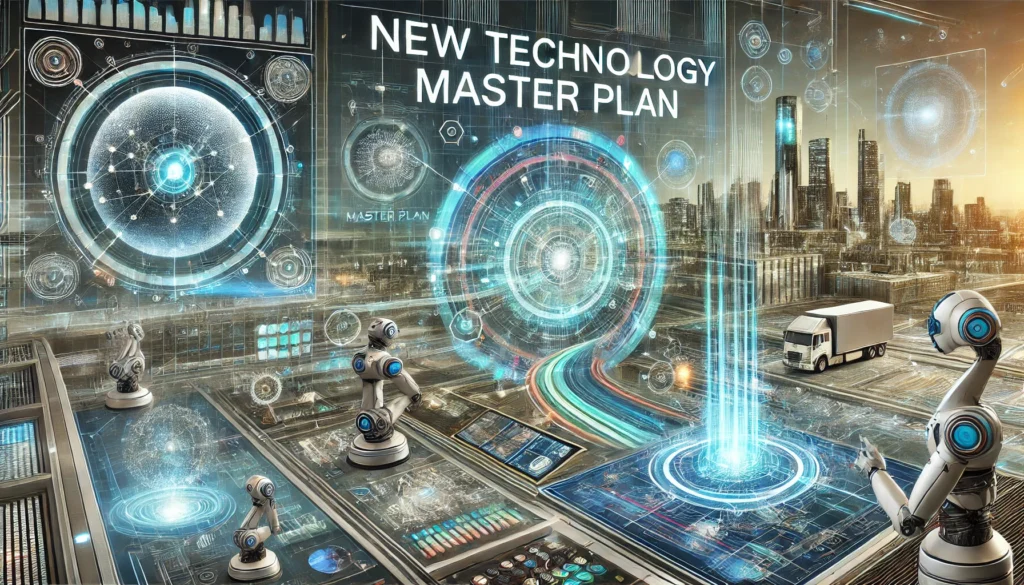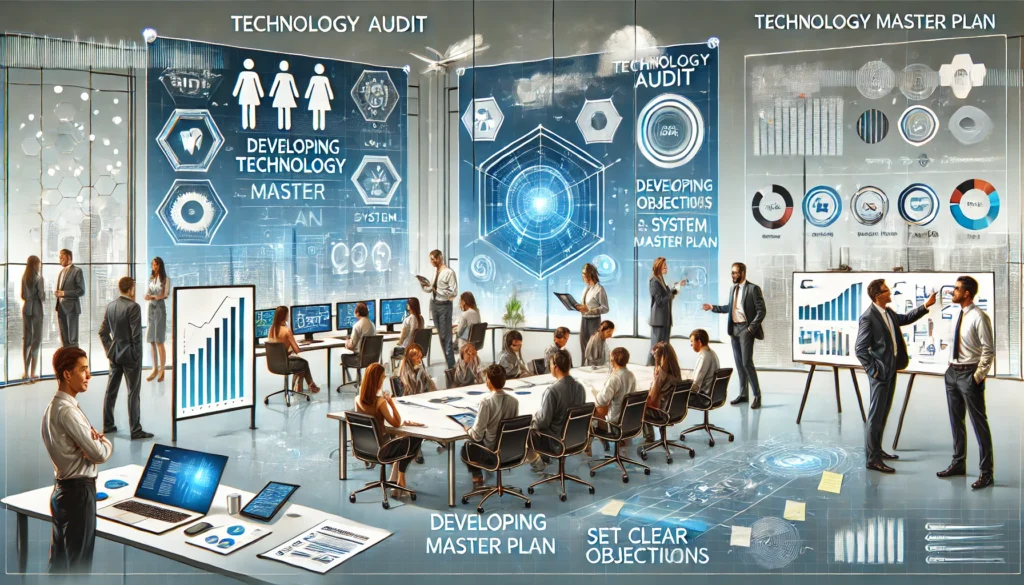The rapidly evolving technological landscape continues to redefine industries, creating unprecedented opportunities and challenges. From automation and artificial intelligence to advanced communication systems, technology is the driving force behind modern innovation and growth. In this dynamic environment, a well-structured new technology master plan endeavour becomes essential for businesses and individuals to stay competitive and future-ready.
Such strategic initiatives provide a clear roadmap for leveraging emerging technologies, optimizing resources, and fostering innovation. By adopting a new technology master plan endeavour, organizations can streamline operations, enhance productivity, and achieve sustainable growth, while individuals gain new opportunities for skill development and career advancement.
Ultimately, a well-executed new technology master plan endeavor bridges the gap between current capabilities and future aspirations, ensuring that technology is not just adopted but strategically integrated to create meaningful impact and long-term success in an increasingly digital world.

Understanding the New Technology Master Plan Endeavour
A technology master plan is a comprehensive blueprint that outlines how organizations can strategically leverage emerging technologies to achieve long-term goals. The new technology master plan endeavour focuses on aligning technological advancements with business objectives to foster innovation, efficiency, and competitiveness.
The primary goals of this endeavor include streamlining operations, enhancing productivity, and enabling organizations to adapt to rapid digital changes. By implementing a robust technology strategy, businesses can identify opportunities to automate processes, integrate advanced tools, and improve customer experiences.
Organizations need a solid technology strategy to remain relevant in today’s fast-paced digital landscape. Without it, they risk falling behind competitors and missing out on growth opportunities. A new technology master plan endeavor ensures that technology investments are purposeful, future-ready, and capable of driving sustainable success.
Ultimately, this innovative approach empowers organizations to thrive in an increasingly technology-driven world.
Benefits of Implementing a New Technology Master Plan
Enhanced Operational Efficiency
A technology master plan helps automate repetitive tasks, streamline workflows, and eliminate manual inefficiencies. With automation tools and optimized systems, businesses can accomplish more in less time while minimizing human error. Improved workflows ensure smooth communication and collaboration across teams, leading to faster project completion and better productivity.
Cost Reduction and Resource Optimization
By streamlining processes and adopting advanced technologies, organizations can reduce overhead costs significantly. Automation minimizes labor costs, while optimized systems ensure better resource utilization. Cloud-based solutions, for example, lower infrastructure expenses and enable scalability. These cost savings can be reinvested into growth initiatives, further strengthening business performance.
Competitive Advantage in the Market
A well-structured technology master plan positions businesses ahead of competitors. Leveraging advanced tools enables faster product delivery, improved customer experiences, and efficient service delivery. Technology-driven innovations allow companies to stand out, adapt to market demands, and establish leadership in their industries.
Improved Decision-Making
Advanced analytics and data-driven insights empower leaders to make more informed decisions. A technology master plan integrates tools for collecting, analyzing, and interpreting data, providing real-time visibility into key performance metrics. Better decision-making enhances strategic planning, reduces risks, and drives business growth through actionable insights.

Steps to Develop a New Technology Master Plan Endeavour
Conduct a Technology Audit
To create an effective technology master plan, start with a comprehensive technology audit. Assess your current systems, tools, and processes to identify strengths, weaknesses, and areas for improvement. Evaluate whether existing technologies meet your organization’s needs and identify gaps that hinder productivity or performance. A detailed audit provides a clear foundation for making informed decisions and allocating resources effectively.
Set Clear Objectives
Establishing clear objectives is critical for success. Define short-term and long-term goals that align with your organization’s vision and strategy. Short-term goals may focus on immediate improvements, like upgrading hardware or optimizing workflows. Long-term goals could include integrating advanced technologies such as AI, automation, or cloud systems to drive scalability and innovation. Well-defined objectives ensure all stakeholders are aligned and efforts remain focused.
Choose the Right Technologies
Selecting the appropriate tools and platforms is essential. Research and evaluate technologies based on factors like functionality, scalability, cost, and compatibility with existing systems. Prioritize solutions that address identified gaps and align with your objectives. Engage vendors, request demos, and seek input from your IT team to make informed decisions.
Implementation and Testing
Develop a structured implementation plan that includes timelines, resources, and milestones. Launch pilot programs to test new technologies on a small scale, gather feedback, and resolve potential issues. Conduct user training to ensure employees understand and adopt new systems efficiently.
Monitor, Evaluate, and Optimize
Continuous monitoring and evaluation are key to long-term success. Regularly assess the performance of implemented technologies against set objectives. Collect user feedback, analyze data, and identify areas for improvement. Optimization ensures systems evolve with organizational needs and remain effective in achieving goals.

Challenges in Adopting a Technology Master Plan
Resistance to Change in Organizations
One of the most significant challenges in adopting a technology master plan is resistance to change among employees and stakeholders. Many organizations face pushback as individuals fear job displacement, unfamiliarity with new systems, or disruptions to daily operations. Effective change management strategies, including communication, training, and leadership support, are essential to overcoming this barrier.
Budget Constraints and Resource Availability
Implementing a technology master plan often requires substantial financial investment and resource allocation. Small to mid-sized organizations may struggle to secure the necessary funds, particularly if there is uncertainty about the return on investment. Additionally, limited IT expertise and workforce shortages can delay implementation timelines and impact project success.
Keeping Up with Rapidly Evolving Technologies
The fast-paced nature of technological advancements makes it difficult for organizations to keep their master plans relevant. By the time new tools are implemented, emerging technologies might render them obsolete. Regular reviews and flexible frameworks are necessary to adapt to innovation without derailing progress.
Security and Data Privacy Concerns
The integration of advanced technologies increases vulnerabilities to cyber threats and data breaches. Ensuring robust security measures, compliance with data privacy regulations, and ongoing monitoring can add complexity to the adoption process, particularly for industries handling sensitive information.
Real-Life Success Stories of Technology Master Plans
Implementing a solid technology master plan has propelled numerous companies to success, showcasing how strategic adoption of technology can drive innovation, growth, and efficiency.
1. Amazon: Cloud Computing Dominance
Amazon’s transformation from an online bookstore to a global tech giant began with its technology master plan for cloud computing—Amazon Web Services (AWS). By investing in scalable cloud infrastructure, Amazon not only met its internal needs but also offered robust cloud services to businesses worldwide. The lesson? Innovation through scalable tech solutions can open new revenue streams and market dominance.
2. Netflix: Leveraging AI and Big Data
Netflix revolutionized entertainment by integrating AI-driven algorithms and big data into its technology strategy. Personalized recommendations, based on user behavior, improved customer retention and satisfaction. This success highlights the importance of data-driven decisions to enhance user experiences and optimize operations.
3. Tesla: Smart Manufacturing and IoT
Tesla’s master plan involved leveraging smart manufacturing and Internet of Things (IoT) technologies to produce electric vehicles efficiently. By automating production lines and improving real-time monitoring, Tesla reduced costs and enhanced productivity. The takeaway? Integrating IoT and automation can streamline operations and reduce overhead.

Key Lessons Learned
- Align technology plans with business goals.
- Leverage emerging technologies like AI, cloud, and IoT for innovation.
- Focus on customer-centric solutions to stay competitive.
These examples prove that a well-executed technology master plan can transform businesses, ensuring sustainable growth and industry leadership.
Future Trends in New Technology Master Plan Endeavors
The future of technology is rapidly evolving, with several key trends shaping the direction of innovation. One of the most significant is the rise of AI-driven strategies, which are enabling businesses to streamline operations, enhance customer experiences, and drive growth through data analysis and automation. There’s also a growing focus on sustainable and green technologies, as companies seek to reduce their carbon footprint and adopt eco-friendly practices. Additionally, personalized solutions are becoming increasingly important, allowing businesses of all sizes to cater to specific customer needs. Emerging technologies are continuously reshaping industries, presenting new opportunities and challenges for the future.
Future Trends in New Technology Master Plan Endeavours
The future of technology is increasingly shaped by several key trends. AI-driven strategies are taking center stage, enabling automation, predictive analytics, and smarter decision-making. Sustainability is a major focus, with businesses adopting green technologies to reduce their environmental impact. Personalized solutions are becoming the norm, offering tailored approaches that cater to businesses of all sizes and industries. Meanwhile, emerging technologies like quantum computing, blockchain, and the Internet of Things (IoT) are reshaping industries, creating new opportunities and driving innovation across various sectors. These trends will define the next wave of technological advancement and growth.
FAQs
Q: What is a New Technology Master Plan Endeavour?
A new technology master plan endeavour is a strategic approach to adopting and implementing technologies to achieve organizational goals.
Q: How can businesses benefit from a technology master plan?
Businesses can enhance efficiency, reduce costs, improve decision-making, and gain a competitive edge.
Q: What are the key steps in creating a technology master plan?
The steps include conducting audits, setting goals, selecting technologies, implementation, and continuous monitoring.
Q: What challenges can organizations face during implementation?
Common challenges include resistance to change, budget limitations, and ensuring data security.
Q: Why is scalability important in a technology master plan?
Scalability ensures the technology can adapt to future growth and evolving need


